What is a solar pergola? It’s an innovative fusion of outdoor living and renewable energy, transforming your backyard into an oasis of comfort and sustainability. Solar pergolas seamlessly integrate solar panels into their design, generating clean energy while providing shade and protection from the elements.
Beyond their energy-saving capabilities, solar pergolas enhance outdoor living spaces with their stylish designs and versatility. Whether you seek a cozy retreat or an entertainment hub, a solar pergola can elevate your outdoor experience.
Define Solar Pergola
A solar pergola is a structure that combines a pergola with solar panels. Pergolas are outdoor structures that provide shade and support for climbing plants. Solar panels are devices that convert sunlight into electricity. Solar pergolas combine the benefits of both structures, providing shade, supporting plants, and generating electricity.
Purpose and Functionality
The primary purpose of a solar pergola is to generate electricity from the sun. The solar panels on the pergola convert sunlight into electricity, which can be used to power the home or other devices. Solar pergolas can also provide shade and support for climbing plants, making them a versatile addition to any outdoor space.
Design and Structure: What Is A Solar Pergola
Solar pergolas are designed to provide shade and protection from the elements while generating renewable energy. They typically feature a latticework of beams that support solar panels and a roof made of either glass or fabric.
The materials used in the construction of solar pergolas vary depending on the manufacturer. However, common materials include aluminum, steel, and wood. Aluminum and steel are both durable and lightweight, making them ideal for pergolas that will be exposed to the elements. Wood is a more traditional material that can be stained or painted to match the surrounding décor.
Sizes and Shapes
Solar pergolas come in a variety of sizes and shapes to accommodate different needs and preferences. The most common shape is rectangular, but pergolas can also be found in square, octagonal, and even curved shapes. The size of the pergola will depend on the amount of shade and protection that is needed.
Energy Generation and Efficiency
Solar pergolas combine the benefits of outdoor living with renewable energy generation. They harness sunlight to produce electricity, reducing energy costs and environmental impact.
The solar panels are seamlessly integrated into the pergola’s roof or canopy, converting sunlight into electrical energy. The energy generated can be used to power various devices, from lighting and fans to appliances and even electric vehicles.
Energy Generation Capacity, What is a solar pergola
The energy generation capacity of a solar pergola depends on several factors, including the size and efficiency of the solar panels, the amount of sunlight the location receives, and the angle of the panels.
A solar pergola is a versatile outdoor structure that combines the functionality of a pergola with the benefits of solar energy. It provides shade, shelter, and support for climbing plants, while also generating electricity through its integrated solar panels. The cost of a solar pergola can vary depending on factors such as size, materials, and features.
For more information on solar pergola cost , including factors that influence pricing, be sure to visit our comprehensive guide.
A typical residential solar pergola can generate between 3 and 10 kilowatts of electricity, enough to power a small home or supplement a larger home’s energy needs.
Factors Affecting Energy Efficiency
- Panel Efficiency: Higher-efficiency solar panels convert more sunlight into electricity, increasing the overall energy output.
- Sunlight Exposure: The amount of sunlight the pergola receives directly affects the energy generated. Locations with more sunlight hours will have higher energy yields.
- Panel Angle: The angle at which the solar panels are mounted can significantly impact energy generation. The optimal angle varies depending on the location and time of year.
- Shading: Obstacles like trees or buildings can cast shadows on the solar panels, reducing their efficiency. Careful planning is essential to minimize shading.
Applications and Uses
Solar pergolas offer a diverse range of applications in various settings. They are increasingly popular in residential spaces, providing homeowners with shaded outdoor living areas while generating renewable energy. In commercial settings, solar pergolas create comfortable and sustainable workspaces, reducing energy costs for businesses.
Residential Applications
– Homeowners can enjoy shaded patios, decks, and gardens with solar pergolas.
– They enhance outdoor living spaces, extending their usability during sunny and rainy days.
– Solar pergolas can power outdoor appliances, lighting, and water features, reducing reliance on the grid.
Commercial Applications
– Businesses can utilize solar pergolas to create shaded outdoor dining areas for restaurants and cafes.
– They provide comfortable workspaces for employees in offices and industrial settings.
– Solar pergolas help businesses achieve sustainability goals and reduce their carbon footprint.
Public Spaces
– Solar pergolas can provide shaded areas in parks, playgrounds, and public plazas.
– They create inviting outdoor spaces for community events and gatherings.
– Solar pergolas contribute to the sustainability of public spaces, reducing energy consumption.
Creative and Innovative Uses
– Solar pergolas can be integrated with architectural features like gazebos and poolside structures.
– They can be customized with adjustable panels and retractable canopies for optimal shade and sunlight control.
– Solar pergolas can be used as charging stations for electric vehicles, promoting sustainability in urban environments.
Comparison with Traditional Pergolas
Solar pergolas offer several advantages over traditional pergolas. They provide shade, protection from the elements, and a source of renewable energy. Traditional pergolas, on the other hand, are purely structural and do not generate electricity.
Solar pergolas are typically more expensive than traditional pergolas, but they can provide a higher return on investment over time. The electricity generated by the solar panels can offset the cost of electricity used to power the home, and the panels can also increase the value of the home.
Advantages of Solar Pergolas
- Generate renewable energy
- Provide shade and protection from the elements
- Increase the value of the home
- Can be used to charge electric vehicles
Disadvantages of Solar Pergolas
- More expensive than traditional pergolas
- May require a permit to install
- Solar panels may need to be cleaned regularly
Advantages of Traditional Pergolas
- Less expensive than solar pergolas
- Do not require a permit to install
- Do not require regular maintenance
Disadvantages of Traditional Pergolas
- Do not generate electricity
- Do not provide protection from the elements
- May not increase the value of the home
Future Trends and Innovations
The future of solar pergolas is bright, with emerging trends and innovations promising to enhance their efficiency, aesthetics, and functionality. Advancements in solar technology and design are paving the way for pergolas that seamlessly integrate with smart home systems, offering greater control and energy optimization.
Design and Technology Advancements
- Sleeker Profiles: Solar panels are becoming thinner and more aesthetically pleasing, allowing for pergolas with a more refined and modern look.
- Integrated Lighting: Solar pergolas are incorporating LED lighting systems that provide ambient illumination at night, creating a cozy and inviting outdoor space.
- Smart Control: Pergolas are becoming equipped with smart sensors and mobile apps, enabling remote monitoring and control of solar energy generation, lighting, and other features.
Efficiency and Sustainability
- Higher Efficiency Panels: Advancements in solar cell technology are leading to panels with higher conversion efficiency, maximizing energy output.
- Energy Storage Integration: Solar pergolas are being integrated with battery storage systems, allowing for excess energy to be stored and used when needed.
- Environmental Impact: Solar pergolas contribute to sustainability by generating clean, renewable energy, reducing reliance on fossil fuels.
Future Innovations
Looking ahead, we can anticipate further innovations in the solar pergola industry, including:
- Biomimetic Designs: Solar pergolas inspired by nature’s energy-efficient structures, such as leaf patterns and tree canopies.
- Augmented Reality (AR): AR apps that allow users to visualize and customize their solar pergola designs before installation.
- Integration with Electric Vehicles (EVs): Solar pergolas with built-in EV charging stations, providing a convenient and sustainable way to power electric vehicles.
Closure
In conclusion, solar pergolas offer a myriad of benefits, from energy savings and environmental friendliness to enhanced outdoor living and aesthetic appeal. As technology continues to advance, solar pergolas will undoubtedly play an increasingly prominent role in creating sustainable and stylish outdoor spaces.
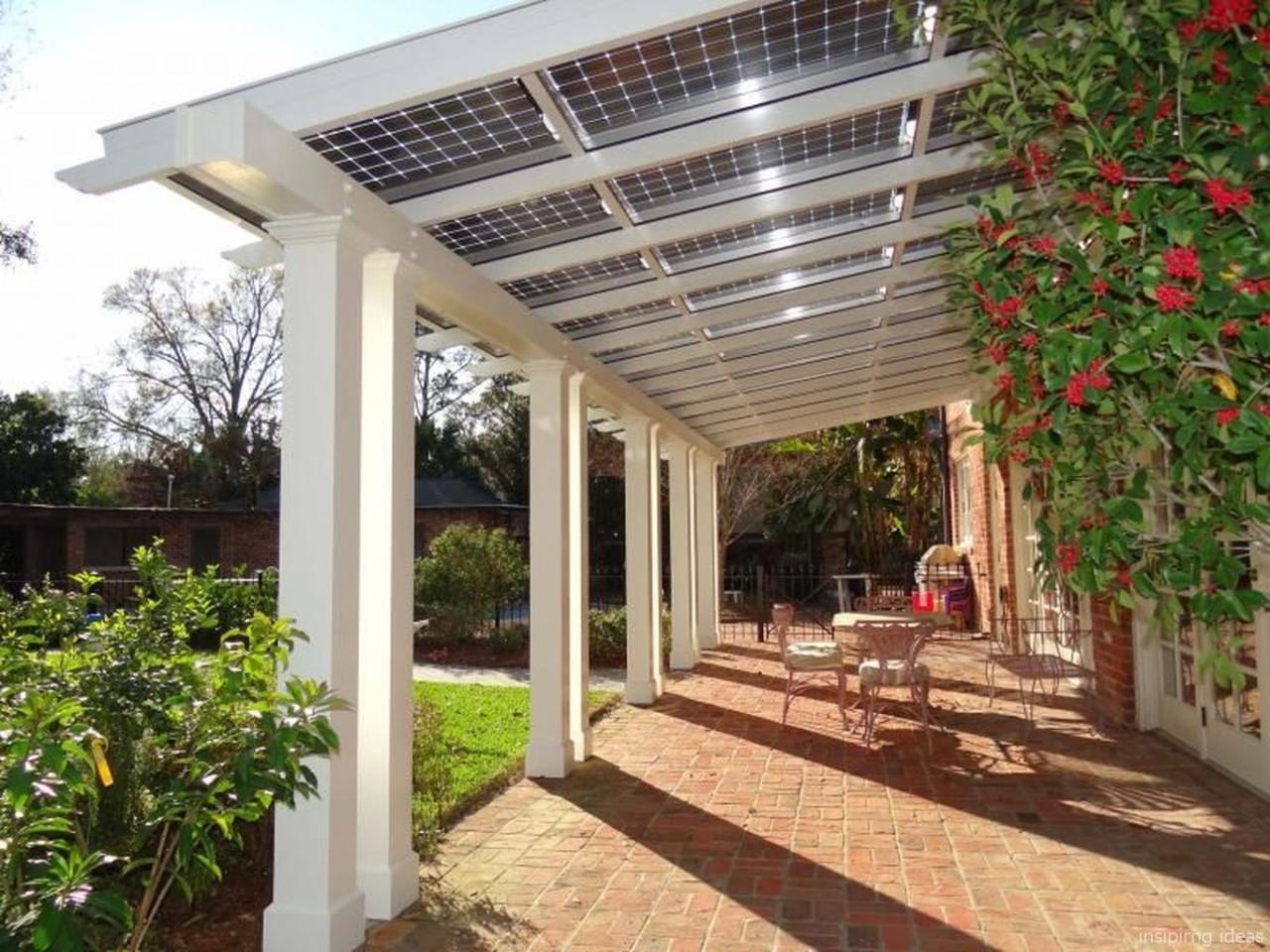

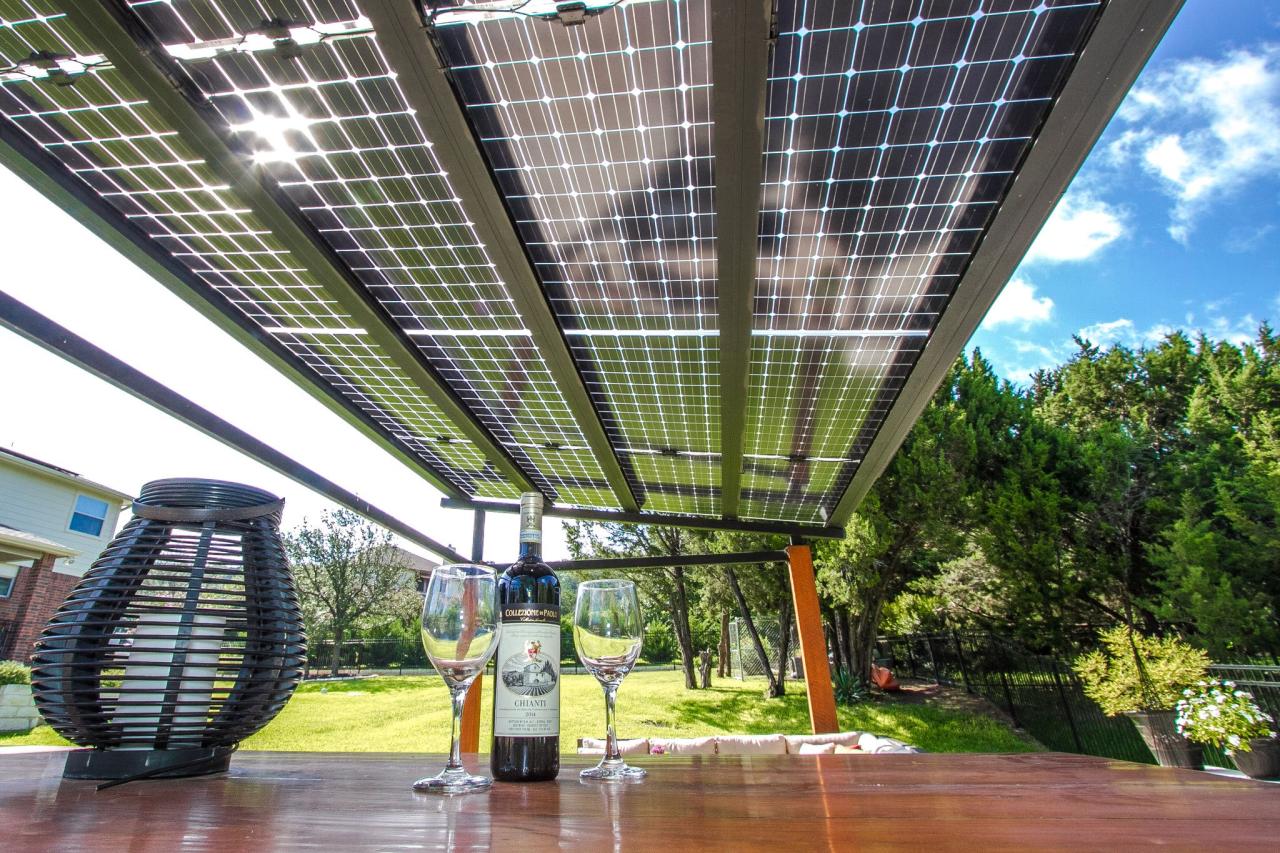
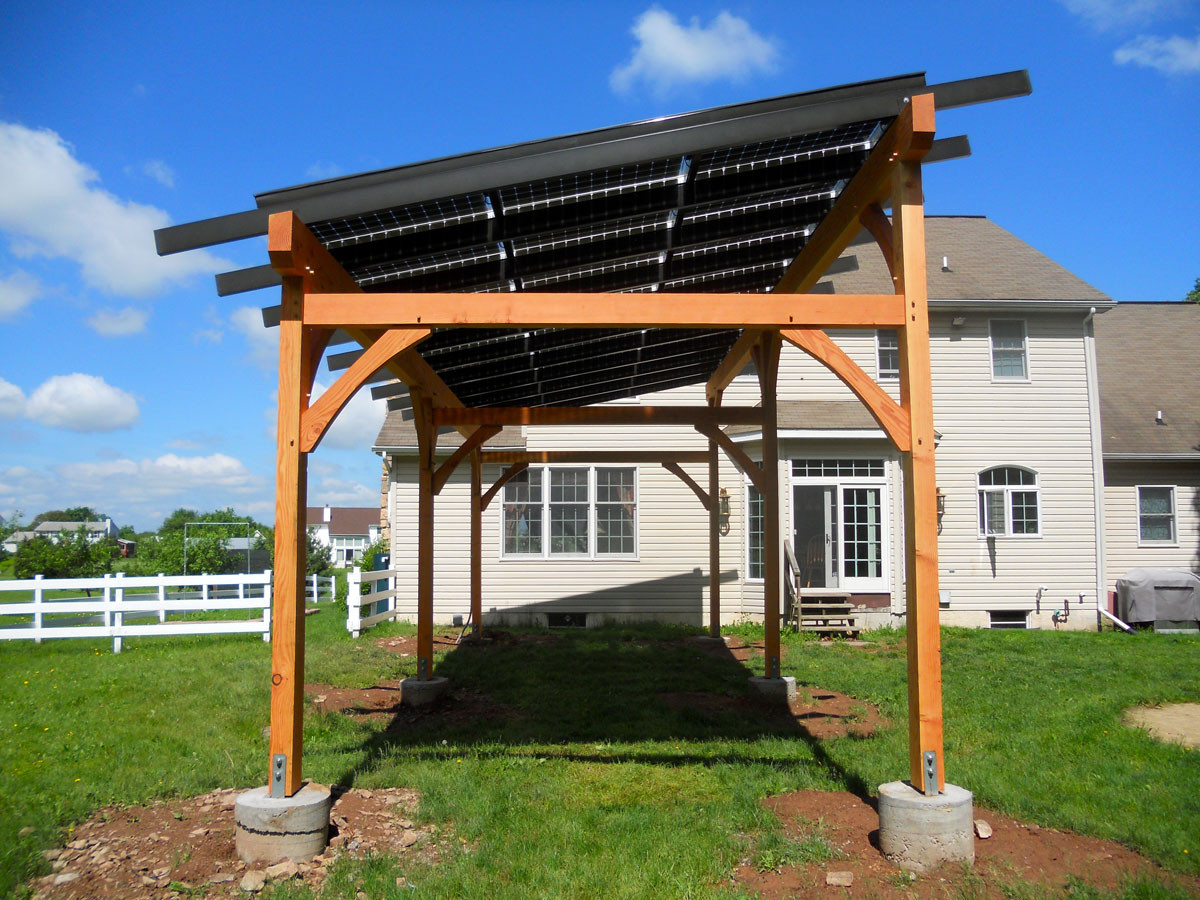


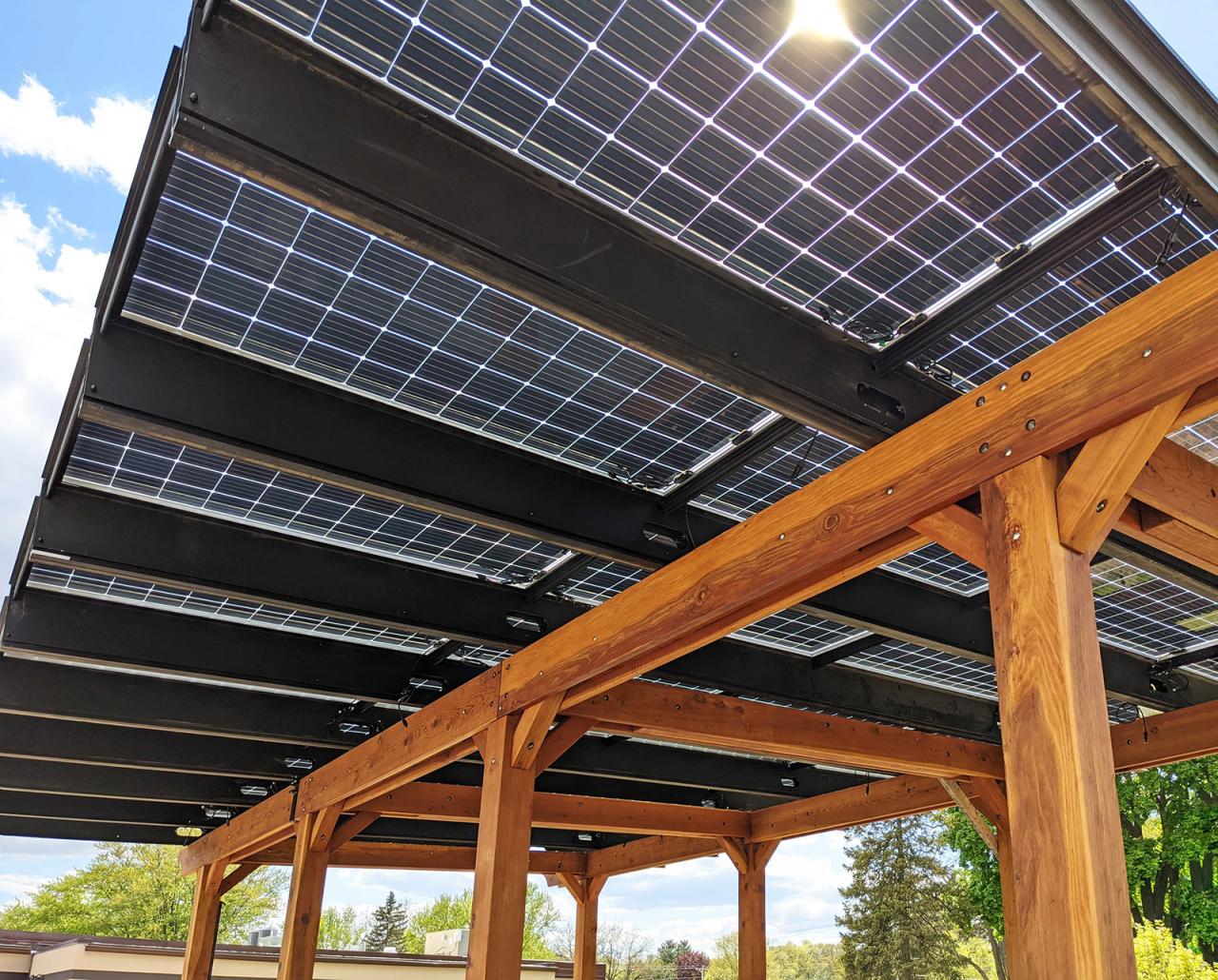

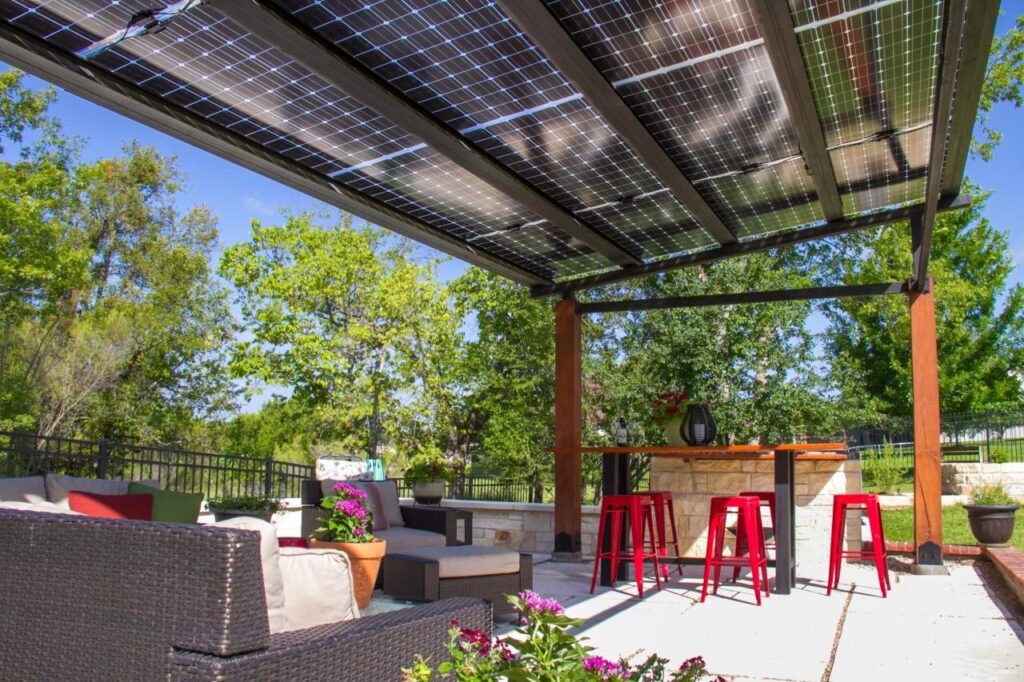


1 thought on “What is a Solar Pergola: A Comprehensive Guide to Energy-Efficient Outdoor Living”